updated 2024 04 04
Sturdy, simple, rustic: an austral expedition sailship without compromises.
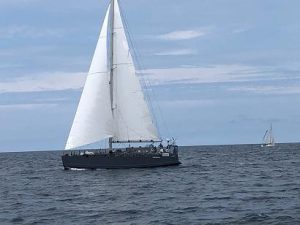
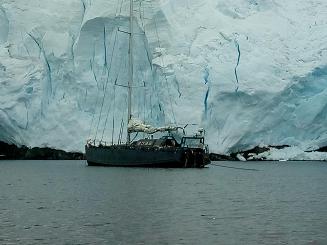
Impact resistant hull (60mm thick), lifting keel made of massive steel, lifting rudders. Sonabia 2 can be grounded without risk.
-
- Dimension 15m x 4.55m
- Draft 2.90m to 1.40m (keel up)
- Weight: empty 11.6 tons, loaded 14.5 tons
- Engine 85 HP
- Sails area 110m2 to 16m2 (heavy weather)
- Fuel tanks 1160L
- Autonomy under engine: 1900 nautical miles
- Water tanks 700L + water maker 60L/h.
- Capacity: 10 persons
- Safety devices: floating survival suits, life jackets, 2 life rafts, emergency beacon (EPIRB), 2 satellite phones, 3 fire extinguishers, CO detector.
Content
Design – construction
- One-off design
- Architect David Reard
- Built in Socoa, Basque Country, France
- Construction 2013-2021
- Certified norm 2013/53 UE (Europe), division 245 (France)
- Navigation zone: no limit
- Category of construction A
- Category of safety devices 1
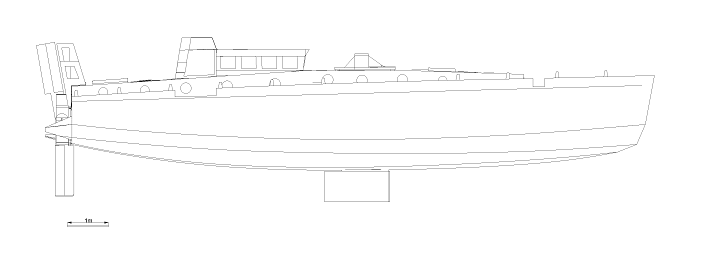
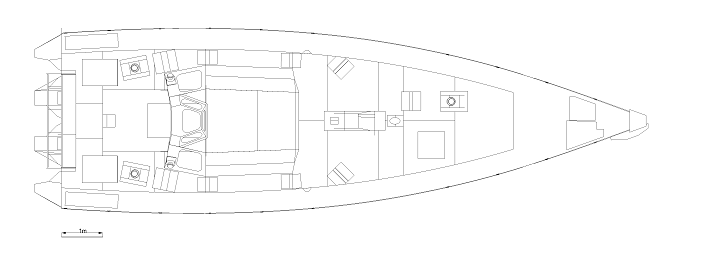
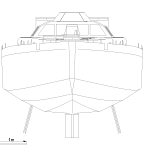
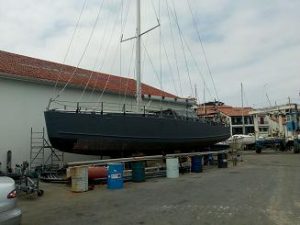
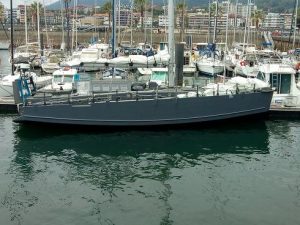
Hull
-
- Multilayer material
- Thickness 46mm (top) – 60mm (below water)
- Internal: sandwich plywood epoxy-glass 14mm
- Middle: PVC foam, compartmentalized and reinforced with fiberglass
- External: epoxy glass, thickness 4mm (top) – 12mm (bottom)
- Bow and aft protection:
- Outside: crash boxes (foam)
- Inside watertight bunkers
- Impact tests IBT method,
- 20kg weight falling from 3m, 3 impacts without perforation
- Multilayer material
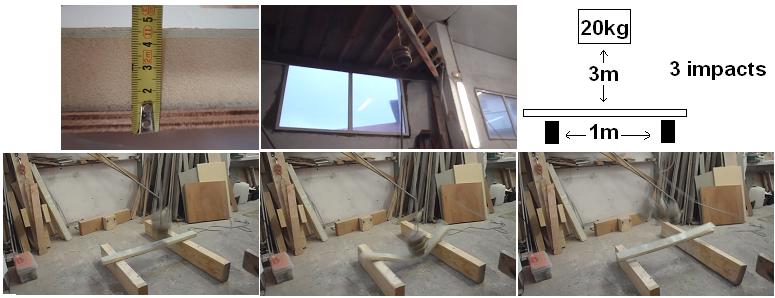
Keel and rudders
- Keel
- Massive steel covered with epoxy fiberglass
- Weight 3.4 tons
- Lifting mechanism: electric winch
- Draft: 2.90m – 1.40m
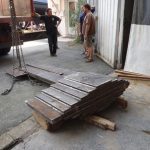
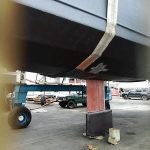
- Rudders
- Wood (laminated) reinforced with fiberglass
- Thickness 75mm.
- Hanging at the stern
- Lifting in case of shock or grounding
- 2 lateral rudders
- 1 auxiliary central rudder (for port maneuvers, engine, floating ice..)
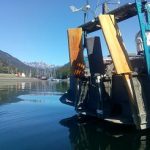
Sails and rigging
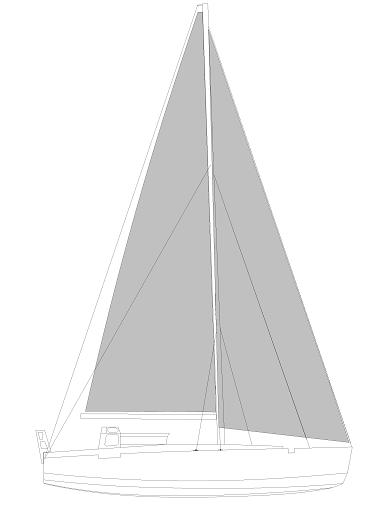
Mast
-
- Material: aluminum
- Height 20m
- 3 levels of spreaders.
- Triple triangulation
- Front stay + shrouds + back stays
- Middle stay + running back stays
- Baby stay + diagonal shrouds
Sails
-
-
- Genoa, yankee, stay sail, storm sail
- All sails with hanks
- Main sail with 4 reefs
- Sails area
- Genoa + mainsail ~ 110m2
- Cutter-style, yankee + stay sail + mainsail 1 reef ~ 90m2
- Storm sail + mainsail 4 reefs ~ 16m2
- Genoa, yankee, stay sail, storm sail
-
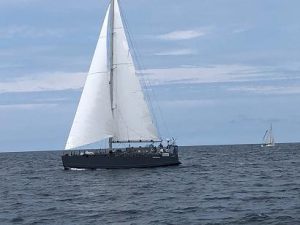
Engine
-
- Nanni 85 HP
- 4 cylinders, 3L
- Turbo charged
- Mechanical gearbox Kanzaki
- Shaft: 40mm diameter, stainless steel AISI316.
- Propeller: 3 fixed blades, bronze
- Tanks:
- Main 2 x 540 L
- Buffer 80L (gravity feeding)
- Fuel consumption: average: 2.9 L/ H at 5 knots
- Autonomy with engine 1900nm
- Double control panel, inside and outside
- Nanni 85 HP
Mooring
-
- Main anchor: Rocna 33 kg. + 100 m chain, 10mm high resistance (grade 40).
- Emergency anchor: 20 kg + 40 m chain, 10mm high resistance
- Mooring lines: 3 x 100 m
- Tender:
- Inflatable tender, capacity 4 persons
- Outboard Yamaha 4HP
- Spare tender, inflatable, 3 persons
Energy
-
- Solar panels 4 x 50W
- Wind generator 300W
- Alternators 2 x 100A
- Service battery bank: 560AH (8x70AH)
- Engine battery: 110AH
Devices chargers
-
- 12V plugs lighter type in cabins
- 220v available in main room
Lights
-
- Multiple portlights in each room for natural light
- Roof lamps and reading lamps equipped with LEDs
Water
-
- Fresh water tanks: 2 x 350L.
- Water maker
- 60 L/h (40L/h in the Antarctic).
- Emergency water maker 5 L/h
- Pressurized sea water
- NO pressurized hot water
- Good ol’ way: use a kettle to make hot water.
Heating
Sources of heat
-
-
- Fuel stove (Refleks 2000K), with electric fan to spread warm air
- Engine heaters (2 radiators with fans)
- Hull and deck dark gray in order to capture solar heat
-
Thermal insulation
-
- Hul and deck: 30mm thick insulating foam
- Insulating bottom layers for mattresses (polycarbonate honeycomb)
- Double glazing
- Independent ventilation in each room (circular holes with deflector and removable lid)
Steering
-
- Exterior + interior
- Cockpit: tiller
- Pilot house: joystick.
- Autopilot Furuno
- Electric drive Raymarine type 2
- Double control (cockpit + pilot table)
- Spare parts and equipment
- Exterior + interior
Instruments
-
- GPS Furuno.
- 2 additional GPS (always connected)
- 1 handheld GPS
- Radar Garmin
- AIS class B Camino 108
- Sensors
- Wind, speed, depth, air pressure…
- Other instruments:
- Barometer, clinometer, clock
- GPS Furuno.
Interior
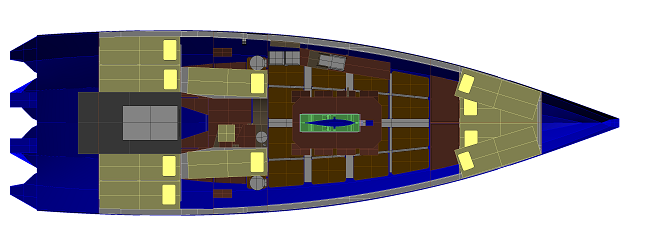
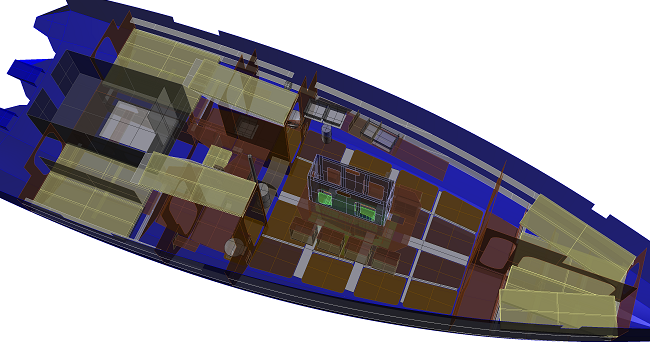
Cabins and berths
-
- 2 rear cabins with double bed
- 2 front cabins with superposed berths
- Convertible into 1 single cabin with double bed
- 2 berths in the pilot house (for crews)
- Total: 10 beds
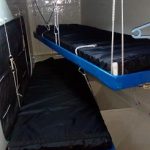
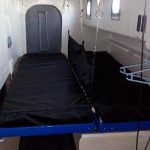
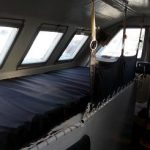
Front cabin, rear cabin, pilot house
Dining room
-
- Central table, bar-like around the keel
- 10 seats, stool type.
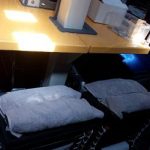
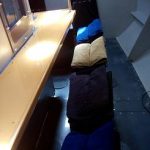
Resting zone
-
- 4 bean bags in the main room to rest and/or sleep

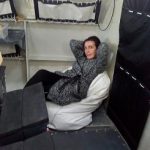
Kitchen
-
- In the main room, along a narrow pathway (prevents falls)
- 2 large sinks (30L)
- Pressurized fresh water + sea water
- Grey water tank: 80L
- Gas stove with 2 burners
- Additional removable stove (“plancha”)
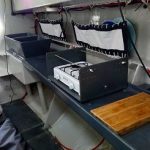
Bathrooms (x 2)
-
- Sea toilet Lavac
- Large wash basin (30L)
- Seat for shower
- Fresh water with shower spray gun and hose
- Pressurized sea water
- Manual pumps for WC and shower waste water
- Black water tank: 75L in each bathroom
- Gray water tank: 40L in each bathroom
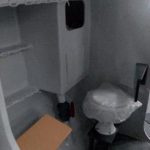
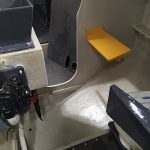
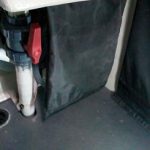
Bathroom (without and with shower floor)
Pilot house
-
- Panoramic visibility
- Instruments on front panel and roof panel
- 2 berths for the crews
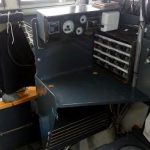
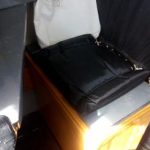
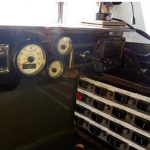
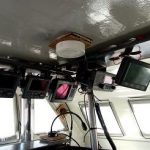
Visibility in the pilot house – Drake passage, 2022 02 05, wind 25 knots and more
Safety
Deck
-
- Anti slippery cover (sand + epoxy resin).
- High stanchions (minimum 80cm above deck)
- 3 stanchion lines, dyneema polyester
- Deck lifelines centered and elevated to tie oneself short
- Deep cockpit, protected against waves
- Dyneema polyester handles around the cockpit and the pilot house
Personal safety equipment
-
- Survival floating suits SOLAS
- Lifejackets with tethers
- Safety belts
Emergency
-
- 2 life rafts (4 + 6 persons)
- Emergency beacon (EPIRB) with GPS
- 2 Iridium satellite phones
- Fire: extinguishers 3 x 2kg, anti fire cover, CO detector.
- First aid kit
- Flooding: 2 electric bilge pumps + 1 manual bilge pump
Posts on Sonabia 2
2024 04 23 - Sonabia 2 has a lifting keel 2023 06 20 - Sonabia 2 has 3 rudders 2023 05 22 - Impact tests on hull materials - results 2023 05 20 - Destroying hull materials for Sonabia 2 2023 05 13 - Sonabia 2: sustainable fuel consumption 2023 05 06 - Sonabia 2: minimalist interior 2023 04 29 - Sonabia 2: ventilation everywhere 2023 04 23 - Sonabia 2: why she is grey


